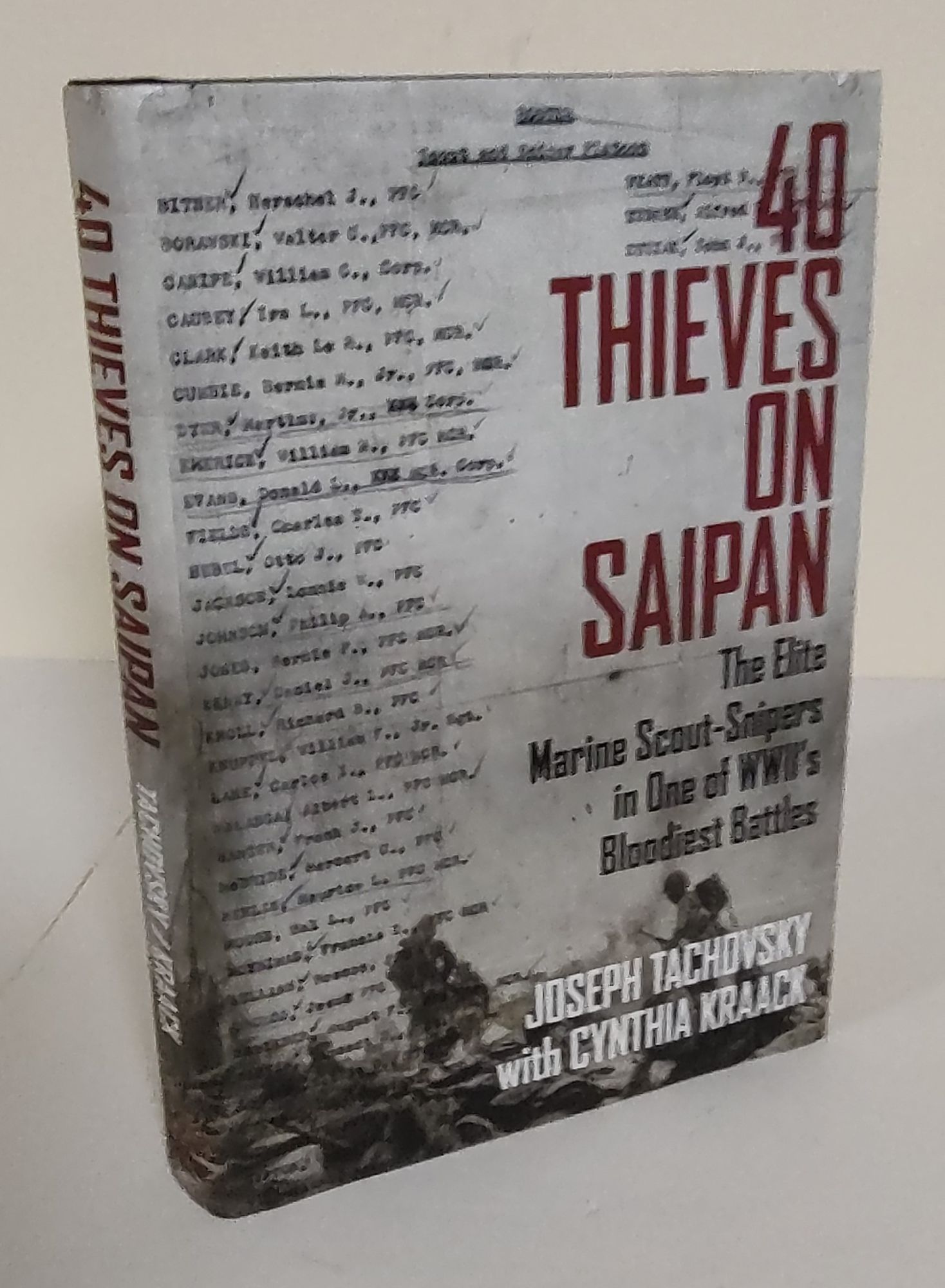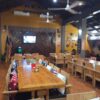THE battle for Saipan during the Second World War has aptly been called the D-Day of the Pacific. Not only did it take place at the same time as its more famous cousin, the D-Day in France, but it marked the beginning of the end for the Japanese empire. Just as in Europe, the end of the war came into sight when the Allies took control of the island.
I have read many books about the battle, from day-by-day tactical accounts to biographies of famous soldiers like Guy Gabaldon, even the famous controversy when Marine General Smith relieved Army General Smith of command.
But a more recent book struck me as the kind of history we should see more often. The book is “40 Thieves on Saipan: The Elite Marine Scout-Snipers in One of World War II’s Bloodiest Battles” by Joseph Tachovsky and Cynthia Kraak. It is a very personal, intimate look at a small group of soldiers, personal because the author writes about his father, and intimate because he uses conversations, personal letters, and oral anecdotes to piece together a remarkable story.
The group that came to be called the 40 Thieves were highly trained specialists assigned to patrol behind enemy lines and gather information about strength, locations and intentions. How strong was the enemy? Where were their headquarters located? When do they plan to attack? The Thieves were ordered to find out, and if they got caught, they had to fight their way back to safety, not with rifles and grenades but with knives and bare hands.
Tachovsky, whose father lead the famous group on Saipan, personally interviewed as many of the Thieves as were still alive, gathering stories of their time in battle as well as the months leading up to the attack, when they trained in the wilderness of Hawaii, honing their deadly skills and getting into trouble.
The Thieves were a wild bunch. As Tachovsky once explained, when two Marines got into a fight, the loser ended up in the infirmary, the winner in the brig. He wanted the one in the brig. Like a real-life Dirty Dozen, the Thieves largely came from the undesirables of the Marine Corp, and sometimes not even there. Two Thieves were actually soldiers from the U.S. Army who ran away to join the group. When one was killed on Saipan they were exposed, and while the other returned to his former unit, it was decided that no disciplinary action would be taken.
The pacing of the book is good as it builds toward the battle the reader knows is coming. By the time the Marines hit the beaches of Chalan Kanoa, the reader feels like he has gotten to know them well. Although inescapable, the authors do not dwell on the carnage for which Saipan was so famous. The style of writing is such that one can almost smell the gunpowder and feel the sweat running down his back.
I enjoyed reading the book and feel like I have gotten to know some of the participants of the battle of Saipan better. I understand what the island went through a little more clearly. I would love to see a similar book written from the point of view of the islanders themselves and even the Japanese. One can only benefit from familiarity with those times and that generation.
BC Cook, PhD taught history for over 20 years. He lived on Saipan and travels the Pacific but currently lives on the mainland U.S.












